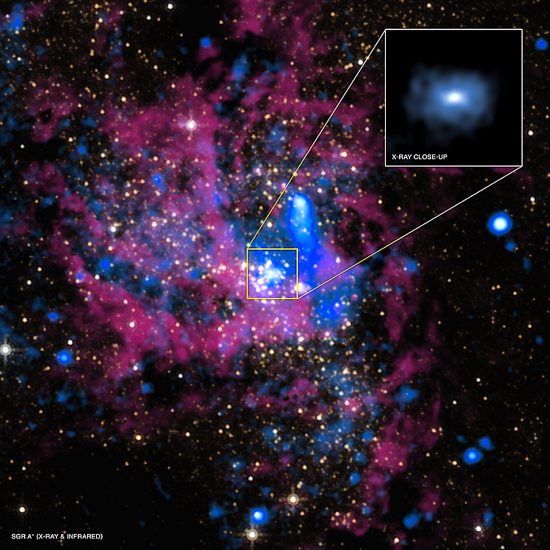
Feb 27, 2019
Inside of a black hole, astronomers believe that matter occupies no volume, yet maintains a gravitational force so great that no light can escape its event horizon.
They are “black” holes, because they are undetectable with optical telescopes. The fact that they are impossible to observe, directly, is a problem, since nearly all galaxy cores are said to harbor “supermassive black holes” (SMBH).
As written in previous Pictures of the Day, no one has ever seen a black hole, and no one ever will. They are “blank spots” in space. Since they cannot be seen, black holes are based on deductions about their effects. How certain are astronomers about black holes? The almost universal answer is 99%. According to their theories, if most galaxies do not harbor black holes in their cores there must be “something even crazier”. An SMBH at the center of the Milky Way is said to mass in the billions of Suns, yet its origin remains a mystery.
From an Electric Universe perspective, the black hole terminology used by astronomers is problematic. Ambiguous ideas such as “the fabric” of space/time, multiple universes, infinite density and other unquantifiable ideas introduce irony into their investigations. For example, theoretical physicist, Kip Thorne once said, “A black hole is made from warped space and time.”
According to Erik Curiel from Harvard University and the University of Chicago:
“Phenomena such as black holes belong to a realm that is inaccessible to observation and experiment. Work based on the assumption that black holes exist therefore involves a level of speculation that is unusual even for the field of theoretical physics. The physical perspective on black holes is itself inextricably bound up with philosophical issues relating to ontological, metaphysical and methodological considerations.”
There is no evidence that matter can be compressed to nearly infinite density in virtually no volume; supernovae formation phenomena are not clear, since stars do not form spherical shells when they explode, they form glowing bipolar formations shaped like hourglasses, therefore, a spherical “event horizon” should not exist. No one knows why black holes absorb all the matter in their “accretion disks” within a few months of formation.
It is often noted in these pages that theories should not be built upon the questionable assumptions of other theories. The list of events derived from computer simulations that are based on foregone conclusions continues to grow, however.
Plasma physicist and Electric Universe pioneer, Hannes Alfvén, thought that the “exploding double layer” should be thought of as a new class of celestial object. Double layers in space plasmas form most of the unusual structures that give conventional astronomers headaches. Supernova explosions, galactic jets, glowing rings, and energetic clouds are examples of how electricity behaves when it moves through dusty plasma.
Birkeland currents in plasma filaments form plasmoids, the more logical system for the birth of stars and galaxies. Electricity is responsible for stars, and when stellar current density gets too high, double layers in the circuit explode, appearing as gamma ray bursts, or X-rays, or flares of ultraviolet light—supernovae, in other words. Although, astronomers believe that those observations are due to gravity’s influence, with no mention of electric charge.
Gigantic masses compressed into tiny volumes are unnecessary: laboratory experiments create flares, jets, and other celestial events using mundane electrical equipment. No supercomputer simulations are necessary, since the experiments can be conducted in real time.
Stephen Smith












